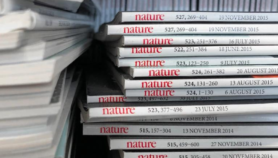Send to a friend
The details you provide on this page will not be used to send unsolicited email, and will not be sold to a 3rd party. See privacy policy.
Free access to electronic science journals is a huge issue, particularly in developing countries where universities receive scant funding. And no wonder: subscriptions can cost up to US$18,000 a year. On top of this, many researchers and academics note that mergers have put control over scientific communications into fewer hands.
In this article, David Malakoff and Daniel Bachtold explore two developments that are firing up the free-access debate. In the United Kingdom, the government is now paying the publication costs for academic researchers who contribute to the open-access journals of a London-based company, BioMed Central. And in the United States, Representative Martin Sabo of Minnesota has introduced a bill aiming to put taxpayer-backed papers, databases, images and other research products into the public domain.
The moves sound promising, but what do they mean in practice? While many hail them as a means to improve the flow of scientific information, others are concerned about the implications for intellectual property rights. The US bill could hamper researchers’ control over the use of their work. And even BioMed Central holds the copyright on and controls access to reviews, according to its own officials. What seems certain is that the debate itself looks set to run and run.Link to feature article in Science
Reference: Science 301, 29 (2003)













